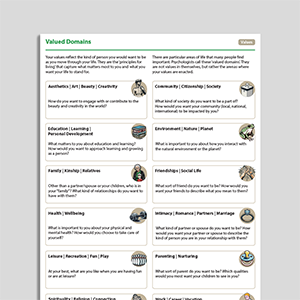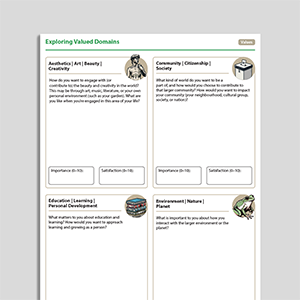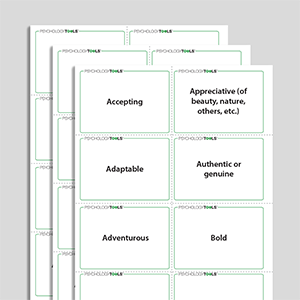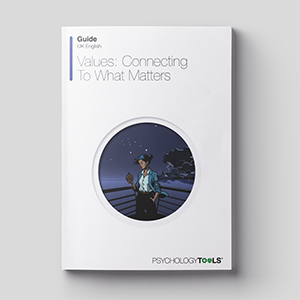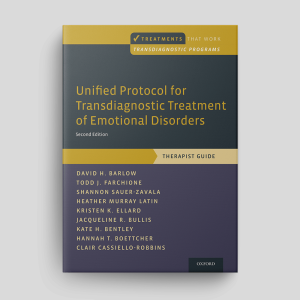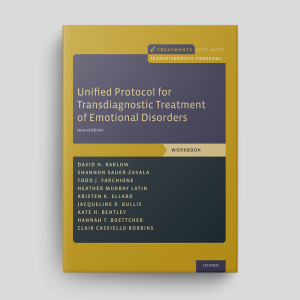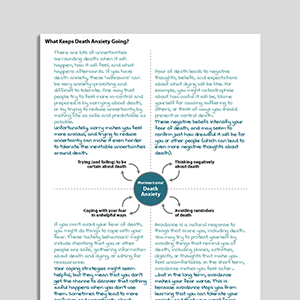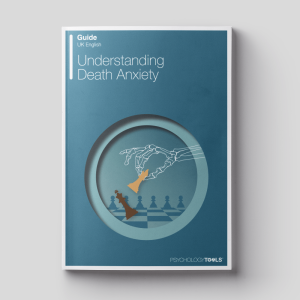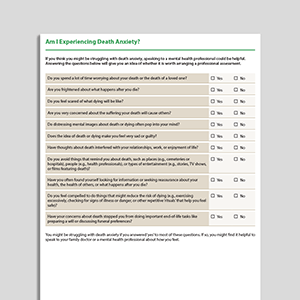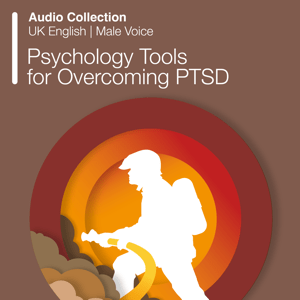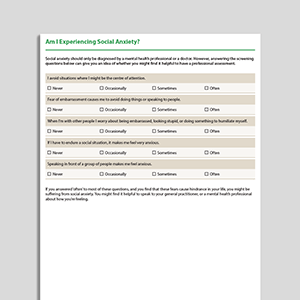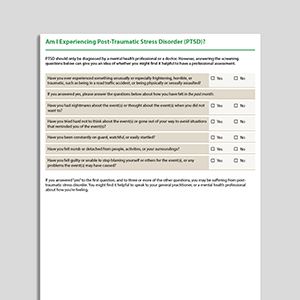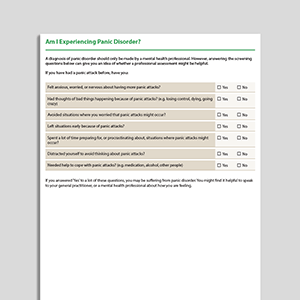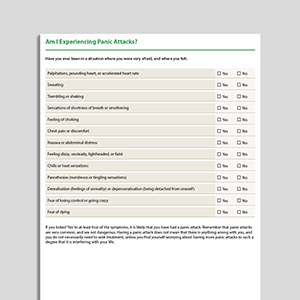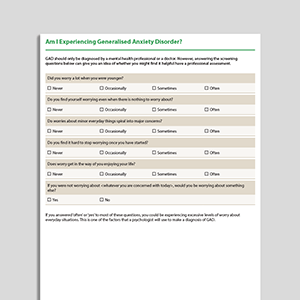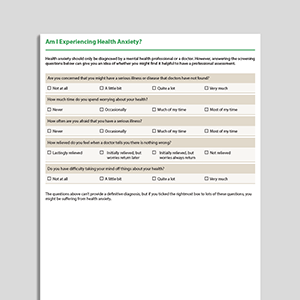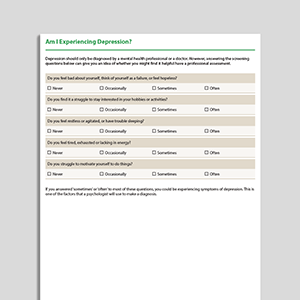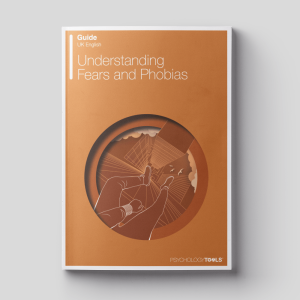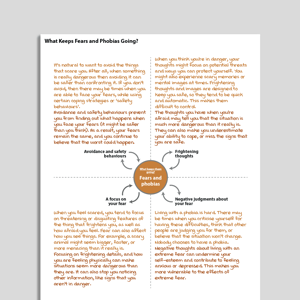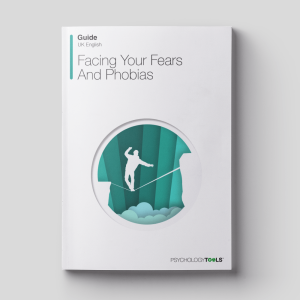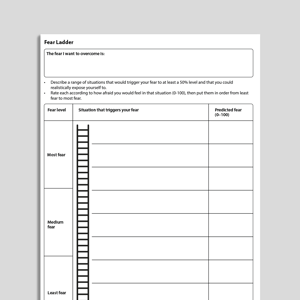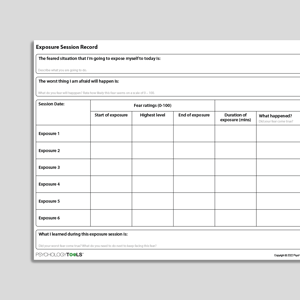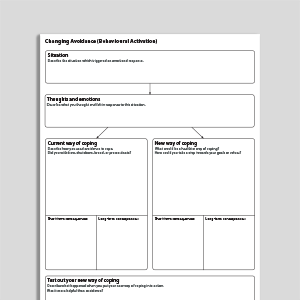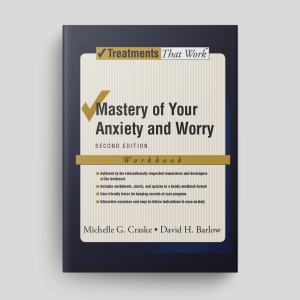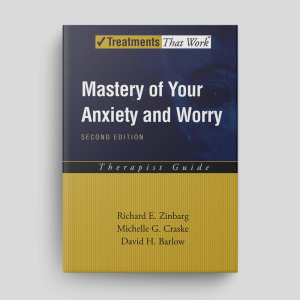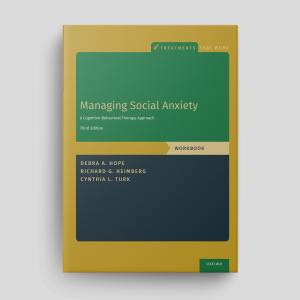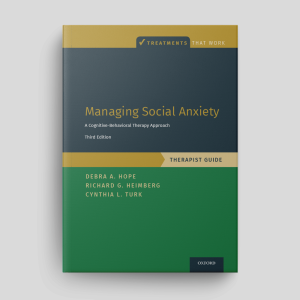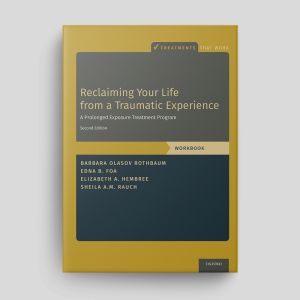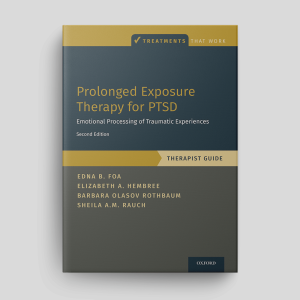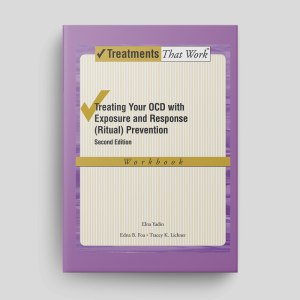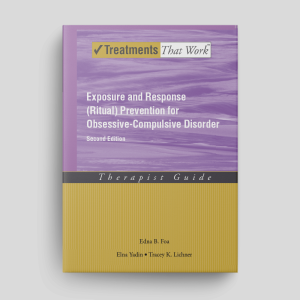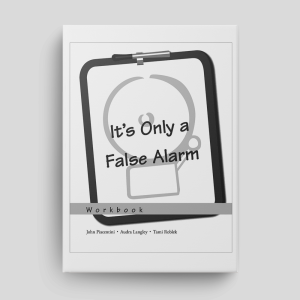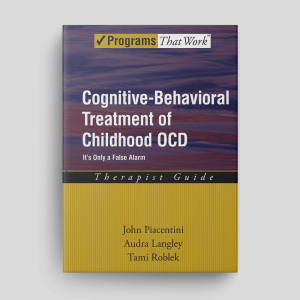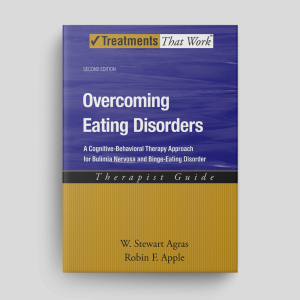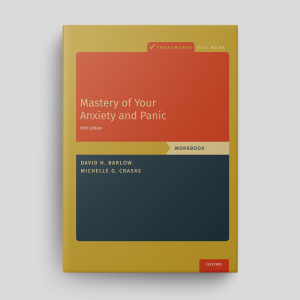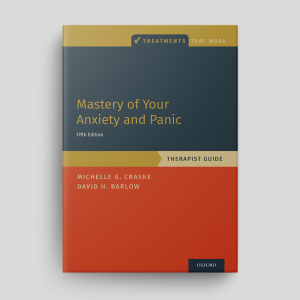Avoidance and Escape
Avoidance and escape refer to behaviors where people either do not enter a situation (avoidance) or leave situations after they have entered (escape). Distraction is considered to be a subtle form of avoidance behavior. Avoidance and escape are natural mechanisms for coping with many kinds of pain and trauma. When used as part of a repertoire of other coping mechanisms, escape and avoidance can considered adaptive. However, they are considered problematic when used too frequently or when they are used to the exclusion of other strategies, and they are included as diagnostic features of a range of disorders. Clinically, avoidance and escape are considered to be problematic because:
avoidance and escape behaviors remove the opportunity to disconfirm negative beliefs (Salkovskis, 1991);
they reduce an individual’s opportunities to obtain positive reinforcement and thus contribute to the maintenance of low mood (Ferster, 1973; Lewinsohn, 1975);
they reduce the number of external stimuli present in an individual’s environment (‘shrinks their world’) which may exacerbate self-focused attention and repetitive thinking (Harvey, Watkins, Mansell, & Shafran, 2004);
according to a habituation model of anxiety the relatively brief exposure periods occasioned by escape and avoidance may server to ‘sensitize’ patients to their feared stimuli (Wilson & O’Leary, 1980).
Showing 1 to 50 of 124 results
Unified Protocol For Transdiagnostic Treatment Of Emotional Disorders In Children: Workbook
Unified Protocol For Transdiagnostic Treatment Of Emotional Disorders In Children: Workbook
Unified Protocol For Transdiagnostic Treatment Of Emotional Disorders In Children And Adolescents: Therapist Guide
Unified Protocol For Transdiagnostic Treatment Of Emotional Disorders In Children And Adolescents: Therapist Guide
Unified Protocol For Transdiagnostic Treatment Of Emotional Disorders In Adolescents: Workbook
Unified Protocol For Transdiagnostic Treatment Of Emotional Disorders In Adolescents: Workbook
Brief Behavioral Therapy For Anxiety And Depression In Youth: Workbook
Brief Behavioral Therapy For Anxiety And Depression In Youth: Workbook
Brief Behavioral Therapy For Anxiety And Depression In Youth: Therapist Guide
Brief Behavioral Therapy For Anxiety And Depression In Youth: Therapist Guide
[Free Guide] Understanding Post-Traumatic Stress Disorder (PTSD)
[Free Guide] Understanding Post-Traumatic Stress Disorder (PTSD)
Vicious Cycle - Responses And Consequences
Vicious Cycle - Responses And Consequences
Vicious Cycle - Costs And Benefits
Vicious Cycle - Costs And Benefits
CBT Model – Maintaining Processes – Past And Present
CBT Model – Maintaining Processes – Past And Present
CBT Model – Maintaining Processes
CBT Model – Maintaining Processes
[Free Guide] An Introduction To Values
[Free Guide] An Introduction To Values
Values: Connecting To What Matters
Values: Connecting To What Matters
Unified Protocol for Transdiagnostic Treatment of Emotional Disorders (Second Edition): Therapist Guide
Unified Protocol for Transdiagnostic Treatment of Emotional Disorders (Second Edition): Therapist Guide
Unified Protocol for Transdiagnostic Treatment of Emotional Disorders (Second Edition): Client Workbook
Unified Protocol for Transdiagnostic Treatment of Emotional Disorders (Second Edition): Client Workbook
What Keeps Death Anxiety Going?
What Keeps Death Anxiety Going?
Understanding Death Anxiety
Understanding Death Anxiety
Am I Experiencing Death Anxiety?
Am I Experiencing Death Anxiety?
Audio Collection: Psychology Tools For Overcoming PTSD
Audio Collection: Psychology Tools For Overcoming PTSD
Am I Experiencing Social Anxiety?
Am I Experiencing Social Anxiety?
Am I Experiencing Post-Traumatic Stress Disorder (PTSD)?
Am I Experiencing Post-Traumatic Stress Disorder (PTSD)?
Am I Experiencing Panic Disorder?
Am I Experiencing Panic Disorder?
Am I Experiencing Panic Attacks?
Am I Experiencing Panic Attacks?
Am I Experiencing Generalized Anxiety Disorder (GAD)?
Am I Experiencing Generalized Anxiety Disorder (GAD)?
Am I Experiencing Health Anxiety?
Am I Experiencing Health Anxiety?
Understanding Fears And Phobias
Understanding Fears And Phobias
What Keeps Fears And Phobias Going?
What Keeps Fears And Phobias Going?
Facing Your Fears And Phobias
Facing Your Fears And Phobias
Changing Avoidance (Behavioral Activation)
Changing Avoidance (Behavioral Activation)
Mastery Of Your Anxiety And Worry (Second Edition): Workbook
Mastery Of Your Anxiety And Worry (Second Edition): Workbook
Mastery Of Your Anxiety And Worry (Second Edition): Therapist Guide
Mastery Of Your Anxiety And Worry (Second Edition): Therapist Guide
Managing Social Anxiety (Third Edition): Workbook
Managing Social Anxiety (Third Edition): Workbook
Managing Social Anxiety (Third Edition): Therapist Guide
Managing Social Anxiety (Third Edition): Therapist Guide
Reclaiming Your Life From A Traumatic Experience (Second Edition): Workbook
Reclaiming Your Life From A Traumatic Experience (Second Edition): Workbook
Prolonged Exposure Therapy For PTSD (Second Edition): Therapist Guide
Prolonged Exposure Therapy For PTSD (Second Edition): Therapist Guide
Treating Your OCD With Exposure And Response (Ritual) Prevention (Second Edition): Workbook
Treating Your OCD With Exposure And Response (Ritual) Prevention (Second Edition): Workbook
Exposure And Response (Ritual) Prevention For Obsessive Compulsive Disorder (Second Edition): Therapist Guide
Exposure And Response (Ritual) Prevention For Obsessive Compulsive Disorder (Second Edition): Therapist Guide
Cognitive Behavioral Treatment of Childhood OCD: It's Only a False Alarm: Workbook
Cognitive Behavioral Treatment of Childhood OCD: It's Only a False Alarm: Workbook
Cognitive Behavioral Treatment Of Childhood OCD: It's Only A False Alarm: Therapist Guide
Cognitive Behavioral Treatment Of Childhood OCD: It's Only A False Alarm: Therapist Guide
Overcoming Eating Disorders (Second Edition): Therapist Guide
Overcoming Eating Disorders (Second Edition): Therapist Guide
Mastery Of Your Anxiety And Panic (Fifth Edition): Workbook
Mastery Of Your Anxiety And Panic (Fifth Edition): Workbook
Mastery Of Your Anxiety And Panic (Fifth Edition): Therapist Guide
Mastery Of Your Anxiety And Panic (Fifth Edition): Therapist Guide
Links to external resources
Psychology Tools makes every effort to check external links and review their content. However, we are not responsible for the quality or content of external links and cannot guarantee that these links will work all of the time.
Assessment
-
Oxford - Agoraphobic Avoidance Scale (O-AS)
| Lambe, S., Bird, J. C., Loe, B. S., Rosebrock, L., Kabir, T., Petit, A., ... & Freeman, D. | 2023
- Scale
- Reference Lambe, S., Bird, J. C., Loe, B. S., Rosebrock, L., Kabir, T., Petit, A., ... & Freeman, D. (2023). The Oxford agoraphobic avoidance scale. Psychological Medicine, 53(4), 1233-1243.
Exercises
- Facing your fears: Exposure | Anxiety Canada
What Are Avoidance And Escape?
Disorders That May Be Maintained by Avoidance and Escape
Avoidance and escape are often maintenance factors in:panic disorder with or without agoraphobia
specific phobia
social phobia
post-traumatic stress disorder (PTSD) and acute stress disorder
generalized anxiety disorder (GAD)
pain disorder
health anxiety
body dysmorphic disorder
psychotic disorders
Helpful Questions for Assessing Avoidance and Escape
Some helpful questions for assessing avoidance and escape include:How do you respond when you feel threatened?
What activities/people/places/situations/objects do you avoid?
What does the avoidance get in the way of you doing?
What would happen if you stopped avoiding?
Treatment Approaches That Target Avoidance and Escape
Exposure is often considered the method of choice to reduce avoidance across the anxiety disorders. Varieties of exposure techniques include in-vivo exposure, graded exposure, and interoceptive exposure. Mowrer’s two-stage model of fear and avoidance is cited as the origin of the behavioral practice of reducing avoidance (Mowrer, 1939, 1960). According to this theory, avoidance behavior is reinforced when it is followed by a reduction in anxiety.Cognitive techniques have also been found to be highly effective treatments for anxiety, with successful treatment leading to reductions in avoidance (Kaczkurkin & Foa, 2015).References
Ferster, C. B. (1973). A functional analysis of depression. American Psychologist, 28(10), 857–870.
Harvey, A. G., Watkins, E., Mansell, W., & Shafran, R. (2004). Cognitive behaviouralprocesses across psychological disorders: A transdiagnostic approach to research and treatment. New York: Oxford University Press.
Kaczkurkin, A. N., & Foa, E. B. (2015). Cognitive-behavioral therapy for anxiety disorders: an update on the empirical evidence. Dialogues in Clinical Neuroscience, 17(3), 337–346.
Lewisohn, P. M. (1975). Engagement in pleasant activities and depression level. Journal of Abnormal Psychology, 84(6), 729–731.
Mowrer, O. H. (1939). Anxiety and learning. Psychological Bulletin, 36, 517–518.
Mowrer, O. H. (1960). Learning theory and behavior. New York: Wiley.
Salkovskis, P. M. (1991). The importance of behaviourin the maintenance of anxiety and panic: A cognitive account. Behavioural and Cognitive Psychotherapy, 19(1), 6–19.
Wilson, G. T. and O’Leary, D. (1980). Principles of behavior therapy. Englewood Cliffs, NJ: Prentice-Hall.
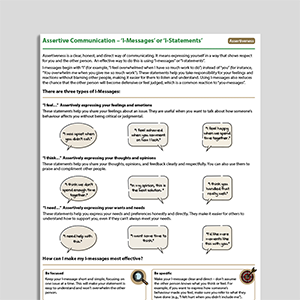
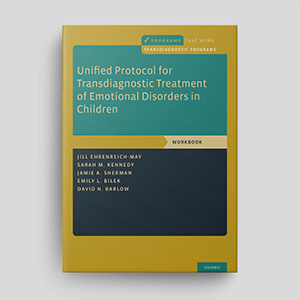
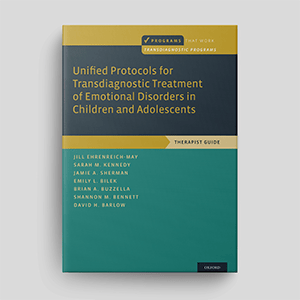
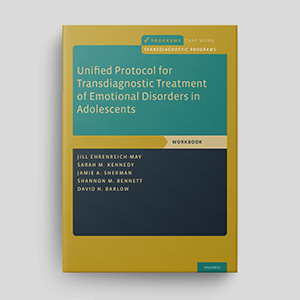
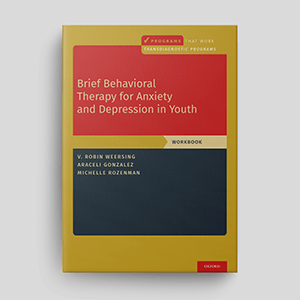
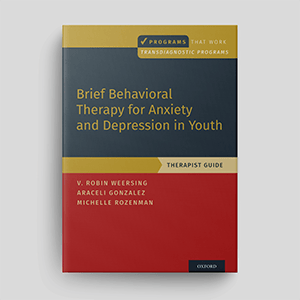
![[Free Guide] Understanding Post-Traumatic Stress Disorder (PTSD)](https://assets-media.psychologytools.com/29108/conversions/*free_understanding-ptsd_en-gb_Guides_Cover-preview.png)
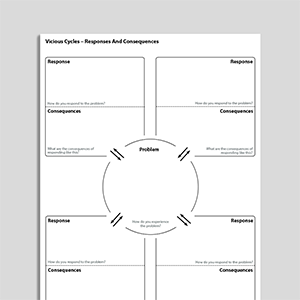
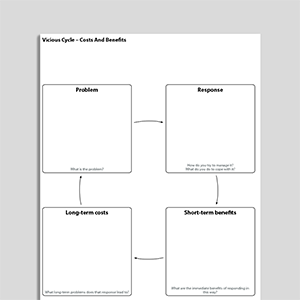
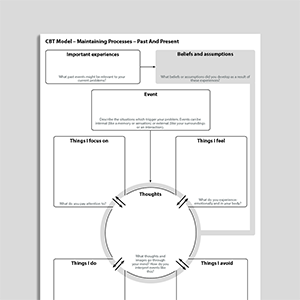
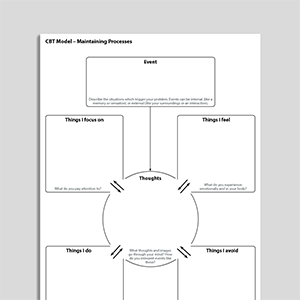
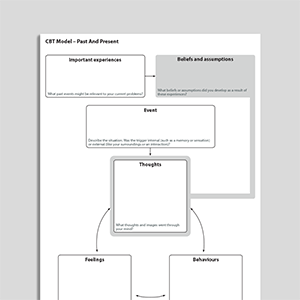
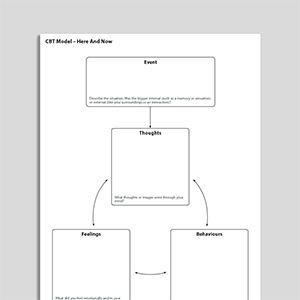
![[Free Guide] An Introduction To Values](https://assets-media.psychologytools.com/28518/conversions/*-an_introduction_to_values_en-gb_Guides_Cover-preview.png)
